Introduction
In the past, I have joked that I do not trust anyone whose YouTube suggestions do not include lofi hip hop radio – beats to relax/study to. Since the start of the COVID-19 global pandemic, as we (privileged sheltered) have receded to our homes to continue day-to-day life, leisure, and work, we have adopted video calls as a primary means of communication1Simon Kemp, ‘Report: Most Important Data on Digital Audiences during Coronavirus’, Growth Quarters | The Next Web, 24 April 2020, … See full note. With the screen share function coming in handy across all popular video meeting platforms, we have all seen more of each others’ web activity recently. And so, whether heading to YouTube to play an educational video for a class or simply sharing music socially, there has been more opportunity than ever to see who does and who does not boast that iconic image on their YouTube ‘home page’; who has or hasn’t spent time tuned in to the most popular channel playing a kind of music labelled lofi hip hop (thereby determining the ingroup and outgroup of the YouTube lofi hip hop camp). There’s more to be said here about YouTube’s recommendation algorithm, but I’ll put that aside for another day.
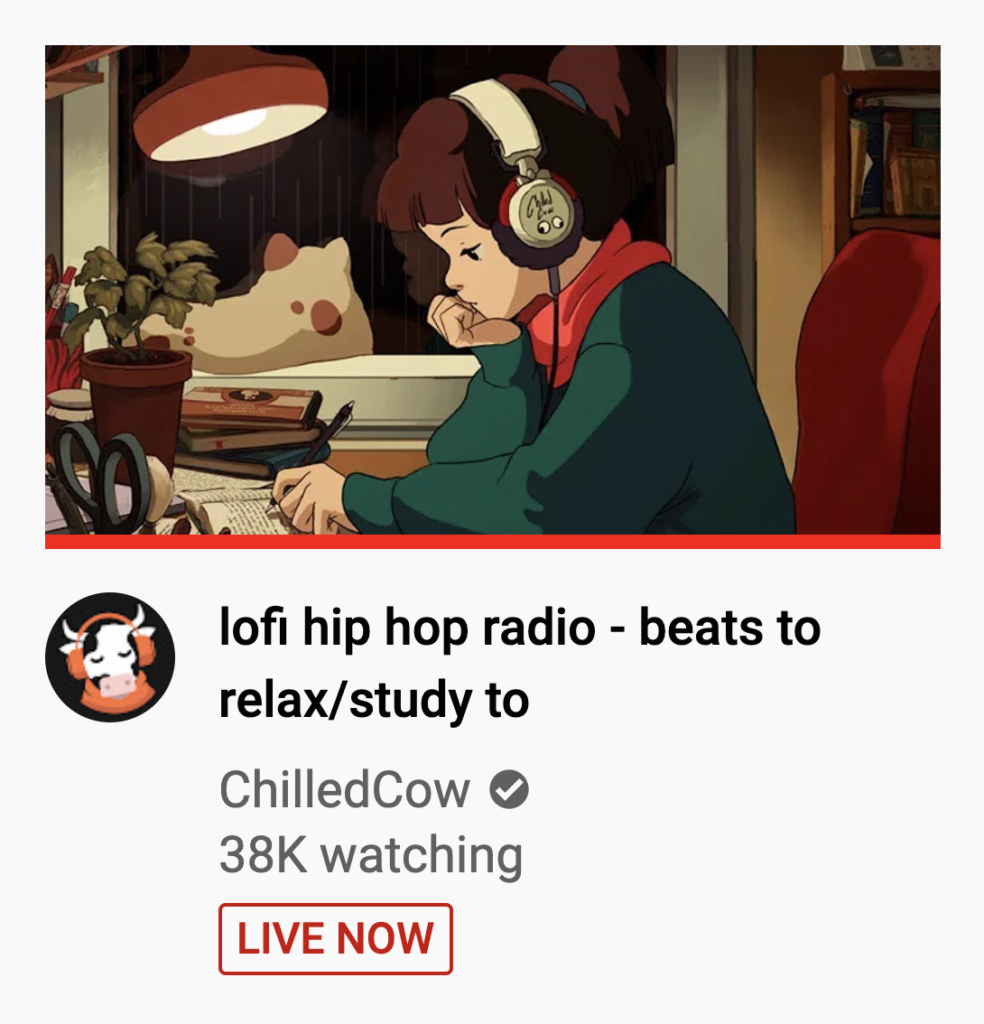
Lofi hip hop is by now an established genre taking pride of place in YouTube’s live radio and ‘mix’ categories, the latter term describing a curated playlist of songs uploaded as a single video (usually around an hour or longer in duration). The music has also been referred to as chillhop or referred to as lofi beats, with several variations on spelling like lo-fi and lo fi beats, though lofi is far and away the most common name, sometimes as a standalone label. It’s an ambiguous term, considering the genre relies entirely on digital technologies for both its production (almost always using DAWs) and consumption (streaming video online from YouTube). After all, the inverse term hifi – high-fidelity – was first used to describe technological advances in audio quality2Keir Keightley, ‘“Turn It down!” She Shrieked: Gender, Domestic Space, and High Fidelity, 1948-59’, Popular Music 15, no. 2 (1996): 149–77.. Nonetheless, the people have spoken, and this style of hip hop sounds sufficiently low-fidelity, especially due to analogue-inspired audio imperfections such as white noise, vinyl hiss and crackle, and cassette tape pitch-wavering (most often produced through ‘high-tech’ – which is to say digital – means)3Adam Harper, ‘Lo-Fi Aesthetics in Popular Music Discourse’ (DPhil Thesis in Musicology, Oxford, University of Oxford, 2014), 371..
Method and Scope
This blog post presents some in-progress research into lofi hip hop as a digital-native phenomenon (that is, something born – and continues to thrive – in the digital domain). A fantastic introduction to the genre has been published by Emma Winston and Laurence Saywood4Emma Winston and Laurence Saywood, ‘Beats to Relax/Study To: Contradiction and Paradox in Lofi Hip Hop’, IASPM Journal 9, no. 2 (24 December 2019): 40–54., which I would highly recommend to any uninitiated readers. Here, I focus on the most recent chapter in the life of lofi, examining changes in discourse during the novel coronavirus pandemic. My precise research question is: (how) has discussion on lofi hip hop changed since the start of the COVID-19 pandemic?
This study forms part of a series of posts testing out a word frequency method using the software Mozdeh. For more on methodology, please see my previous post here – note that this time I am comparing two subsets of texts by date rather than texts associated with commenter gender. By studying the words audiences use in commentary on the music in question, I aim to determine the values they hold. The text association comparison follows a standard thematic analysis procedure, which I support with more conventional cultural readings. This dual approach forms part of Digital Flows’ methodological innovation, combining data-scientific methods with close critical analysis. This post is the first of two I’ll write on lofi during COVID-19, since the study revealed several important findings, and I want to keep the post length manageable. Here’s the second part!
The representative sample of lofi hip hop selected for this research comprises 30 YouTube mixes published between 2016 and 2020. Combined, they have half a billion views5482.1 million views as of 17 December 2020, with some rounding. The videos individually range from 3.2 to 51.1 million views, with extreme disparities in the ratios of views to comments. There are approximately 367k combined comments.. Uploaders include ChilledCow, the bootleg boy, Homework Radio and Chillhop Music. Although I borrow its title for this post and it has a considerable number of comments, I excluded “chill beats to quarantine to”, uploaded by actor and musician Will Smith to promote Bel-Air Athletics merchandise. My reasoning was that a video making such specific mention of COVID-19 measures – and posted by a well-known figure – would generate anomalous commentary and add unnecessary noise to the sample. Note that no radio-style, live-streamed YouTube videos were used, because this format disables static comments preserved on the page in favour of a live chat function where comments cross the screen in realtime. As such, text is not as easily accessible or archivable by viewers of the public webpage (instead stored privately, one would expect, by Google).
The mixes were selected for having a high quantity of comments (at least 4k, up to 34k) and a range of musical and semantic signifiers that are associated with lofi hip hop. Given the memes that circulate around the genre title, here are some quick insights on the mix titles: two thirds (20) of them used the word “lofi”, half (14) used “hip hop” and/or “chill”, and around a third (9) made some mention of time (e.g., “2 A.M.”, “late night”). The term “study” was mentioned in a third of titles (9), as was “beats” (8) and “jazz” (8). Five video titles used aesthetic text (more on this in the next blog post). As an indicative lofi mix title, Feardog Music captured most of the common keywords with the video “3:30 a.m. ~ lofi hip hop / jazzhop / chillhop mix [study/sleep/homework music]”. These terms have gained cultural popularity to the extent that Australian clothing company Cool Shirtz has taken to printing (and in December 2020 had sold out of) t-shirts with a pastiche of Universal Music Group’s Now That’s What I Call Music compilations.
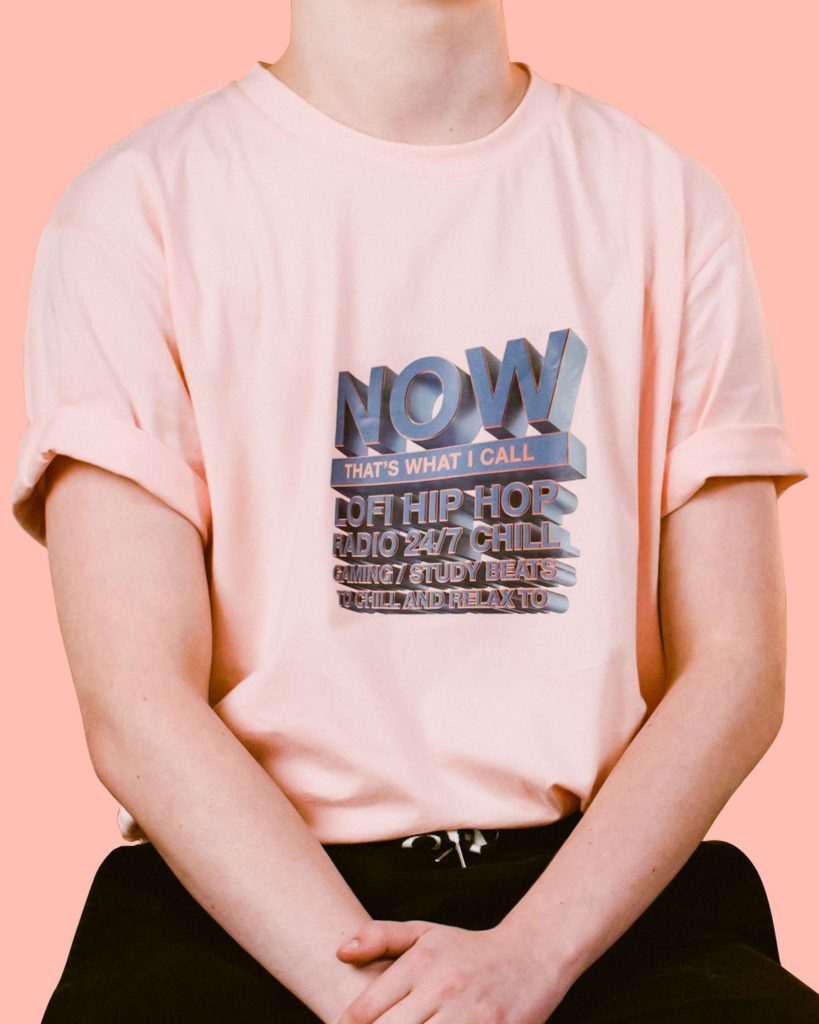
I collected 97k comments posted prior to March 2020 and 85k comments posted in the subsequent nine months (between 1 March 2020 and 27 November 2020), a period which included government-ordered lockdowns affecting half of the global population6Gerry F. Killeen and Samson S. Kiware, ‘Why Lockdown? Why National Unity? Why Global Solidarity? Simplified Arithmetic Tools for Decision-Makers, Health Professionals, Journalists and the General Public to Explore Containment Options for the 2019 … See full note. Although provinces in mainland China announced quarantine measures in January and the WHO did not declare COVID-19 a pandemic until 11th March, many major countries launched lockdowns throughout March. 1st March was chosen as the cutoff point as a neat division between pre-pandemic conditions and the current period, which includes a number of ongoing public health measures. Given that YouTube is an American platform, lofi hip hop is predominantly communicated and commented on in English, and it is fair to assume that the audiences generally reside in English-speaking countries and other territories with high levels of internet connectivity and streaming platform use (USA, India, UK, Germany, France).
The prominence of the proposed function – beats to study/relax to – is worth some attention. There has been widespread commentary on the implications of this elision, as though studying and relaxing are interchangeable activities (or at least benefit from similar accompaniment)7Adam Harper, ‘What Is Lo-Fi? A Genealogy of a Recurrent Term in the Aesthetics of Popular Music Production’ (Research Seminar, City University London, 9 December 2020); Michael Wu, ‘What Are Lofi Hip Hop Streams, and Why Are They So … See full note. Moreover, the conversations about homework and academic expectation that play out in the live chat indicate a large student audience attempting to relax while studying, playing the music as a means of enhancing periods of high-pressure and anxiety-provoking academic work. Rather than high-octane music used for ‘motivation’, lofi purports to offer the opposite. It resolves to calm the listener, as the pairing of study/relax alludes to seeking a more relaxed form of studying. Lofi hip hop is clearly a tool employed effectively by students while working, a practice which may have proliferated when COVID-19 caused many educational institutions, especially colleges and universities, to transition to virtual forms of engagement8Olasile Babatunde Adedoyin and Emrah Soykan, ‘Covid-19 Pandemic and Online Learning: The Challenges and Opportunities’, Interactive Learning Environments (2 September 2020): 1–13, https://doi.org/10.1080/10494820.2020.1813180.. It is worth examining how lofi’s student audience has been affected.
Essentially, I was interested to see whether discourse on lofi hip hop has changed since the pandemic became a fact of everyday life, so I compared the texts posted before March 2020 with those appearing after in order to determine statistically significant differences in the proportions of words used in comments. Reading the terms that had substantially increased and declined in popularity revealed a variety of changes in the contexts of listening, conventions of lofi discourse, and emotional expressions. This post focuses on the first of these: how listeners discussed the circumstances of their engagement with the videos. In a Dazed article profiling the genre, Kemi Alemoru points out that the collective sentiments of the YouTube comments on lofi mixes are (by YouTube’s standards) “uncharacteristically friendly” and that commenters form a “therapeutic community”9Kemi Alemoru, ‘Inside YouTube’s Calming “Lofi Hip Hop Radio to Relax/Study to” Community’, Dazed, 14 June 2018, https://www.dazeddigital.com/music/article/40366/1/youtube-lo-fi-hip-hop-study-relax-24-7-livestream-scene.. Similarly and more specifically, Winston and Saywood note the prevalence of listeners sharing “confessions and worries”, as well as the “relative anonymity and consequence-free interactions between strangers” that facilitate acts of “interpersonal care”10Winston and Saywood, ‘Beats to Relax/Study To’, 50.. Given that the comment sections are typically emotionally expressive, interactive, and mutually supportive, and that the pandemic has prompted significantly more use of online spaces for interpersonal communication, I was keen to find out whether such conventions would be altered by the pandemic conditions, and if so, in what ways. Here’s what I discovered.
Themes: Listening Context
COVID-19
It should come as no surprise that there were many more discussions related to COVID-19 during the pandemic than there were prior to its onset. The terms “quarantine”, “corona”, “covid”, “virus”, “pandemic”, “coronavirus”, “lockdown”, and “covid-19” appeared in the sample with extreme statistical significance (in order from most to least significant: “covid-19” appears about a tenth as commonly as “quarantine”). There were hardly any mentions of each of these terms before 1 March 2020 – “covid”, “pandemic”, and “lockdown” do not appear even once – compared to hundreds of uses in the subsequent period. The most popular term, “quarantine”, emphasises the social effects and personal implications of the pandemic, generating at least 500 comments in which listeners report their specific circumstances11All example texts are paraphrased, or cut up and rearranged, to preserve poster anonymity. I rarely introduce entirely new words so that a faithful portrait of the sentiments expressed in lofi commentary is maintained.:
‘This made me think of better times before the quarantine’
‘Listening to this in quarantine’
‘I’m so lonely now my city’s gone into quarantine’
The melancholy tone is characteristic of lofi discourse, with a notable presence of nostalgia. A number of comments express gratitude for the music bringing comfort or improving relaxation during lockdown periods. There were relatively few comments on the reasons for quarantine, such as preventative measures or discussion of the virus itself, which suggests the audience to be accepting the orders as a fact of contemporary life (though the occasional “fuck quarantine” does appear). More technical terms like government, state, and transmission did not appear in statistically significant proportions of comments before or after March.
The word “stay” saw a large increase in usage (more significant even than “covid-19”)12When I read this back, it seemed erroneous, so I checked the stats. “Covid-19” previously appeared in 0% of texts (0 mentions) and appears in 0.0686% of texts after 1 March (58 mentions). “Stay” jumped from 0.9457% (921) to 1.3821% (1168), … See full note, likely because it carries several meanings relevant to the pandemic. It has long been a word in common use across lofi comment sections, however: the phrase “stay awake” was often posted by tired students and “stay alive” was advocated by emotionally supportive participants. During the pandemic, the phrases “stay safe” – either as a genial expression or personal desire – and “stay inside” – as a recommendation or received instruction – have also become prevalent. Notably, these uses “stay” are fairly conversational expressions, implying commenters responding to one another. In the following blog post, I’ll make some more in-depth inferences about how interpersonal discussions have changed during the pandemic. In any case, I should note that “stay” has a very broad range of uses beyond the few common ones I’ve highlighted, frequently appearing when listeners report their current circumstances or state of mind more generally, as in “still staying at home”, “I just want to stay in bed”, or “trying to stay chill”.
Studying and working
As well as positioning oneself in the specific circumstances of the pandemic, lofi listeners increasingly report periods of study accompanied by the YouTube mixes. A range of associated terms speak to the pervasiveness of studying while listening: “online”, “doing”, “module”, “assignment”, “study”, “finished”, “homework”, “studying”, “session”, and “classes”. Although lofi videos have customarily advertised the benefits of ‘beats to study to’, this appears to have become much more common during the pandemic, as listeners increasingly discuss putting music to this very use. While “doing” would seem too broad to consistently indicate education, it almost always occurs in relation to another word in this theme, especially “online school” or “online class”. This makes sense. Many students are working from home during lockdowns and have unprecedented control over their background music: they might enjoy a lofi mix while on a video call for a lesson or lecture, for instance, a privilege likely denied in a physical classroom. The term “school” has only become ever so slightly more popular, and is not even close to the benchmark for statistical significance13All terms quoted as significant in this article use p≤0.001., evidencing the novelty and ubiquity of “online” learning in particular.
With education primarily taking place remotely, there is a lot of “homework” done (or at least reported) by lofi’s listener base. Granted, this was conventional for lofi pre-pandemic, though the public health measures find commenters making more mention of it than ever before. I was struck by the personal organisation and time management implied by some of the terminology, as people frequently write about a “module” or “session” (supposedly commenting after study to mark their completion of a study period – high levels of discipline, too!). The use of such formal time divisions invites further analysis. Presently, there might be a popular conception that remote school and university learning enables students to pay less attention and get by without putting in much effort. For instance, The Center for Research on Education Outcomes at Stanford University released a report on “Estimates of Learning Loss” and USA Today recently reported “alarming numbers of kids falling behind, failing classes or not showing up at all”14Erin Richards, ‘Students Are Falling behind in Online School. Where’s the COVID-19 “disaster Plan” to Catch Them Up?’, USA Today, 14 December 2020, … See full note. Putting aside how these institutions undoubtedly amplify the pressure placed on students to meet arbitrary benchmarks, it is worth noting that concerns about cyber-slacking long precede the widespread rush to distance education15Li Li and Scott Titsworth, ‘Student Misbehaviors in Online Classrooms: Scale Development and Validation’, American Journal of Distance Education 29, no. 1 (2 January 2015): 41–55, https://doi.org/10.1080/08923647.2015.994360; Aakash Taneja, … See full note.
However, instead of learning less, the students using lofi hip hop are more expressive than ever about the work they are getting done in this period: the term “module” had 3 total references prior to March compared to 152 mentions after. This might simply emphasise the novel structure of virtual learning environments, but it is still a striking increase indicating where commenters’ attention is directed. At least twice as many commenters took to the comments to report being “finished” with a chunk of work during the first 9 months of the pandemic compared to the three years prior. For what it’s worth, I don’t have any evidence to suggest a causal link between the use of lofi and actual student productivity, although it seems intuitive that students would benefit from the ability to customise their environment to suit their learning preferences. This applies at least to those with the privilege of home computer access and who submit their thoughts to the public forum to celebrate (for example) “another online module finished!”.
Further challenging the narrative of the pandemic as an early and extended summer break, it may be the case that students are generally spending more time studying under COVID-19 conditions.
The lofi audience, at least, appears to be taking more responsibility for their own learning, perhaps due to anxieties about ‘keeping up’ with class. There is a clear precedent for this commitment to productivity and schoolwork (or other educational labour) in the community, which Winston and Saywood associate with the social frame of Jonathan Crary’s “24/7 capitalism”16Jonathan Crary, 24/7: Late Capitalism and the Ends of Sleep (London: Verso Books, 2014).. They describe lofi hip hop as a fitting soundtrack to a (principally U.S.) context where the time spent in school and doing homework has continuously increased since the 1980s, and where periods of time formerly used for leisure and relaxation (especially, I would note, evenings) have been filled with more work17Winston and Saywood, ‘Beats to Relax/Study To’, 49.. As distance learning boasts various capacities for surveillance – consider Zoom’s controversial attention monitoring feature18Zoom removed this feature in April, although competitors like GoToWebinar retain it., or virtual learning environments’ activity completion tracking – it is clear to see how greater demands for work are regulated, a convention likely intensified by the pandemic, as manifested in the lofi comment sections with its abundant references to “doing”, “homework”, “studying”, and “classes”. That said, the organised implications of a study “session” or “module” that I raised above imply that students are successfully putting boundaries around periods of study accompanied, of course, by lofi beats.
Time and place
If quarantine and studying have largely been occupying the minds of commenters in the last 9 months, it follows that there are fewer references to other distinct times and places. Indeed, the terms “night”, “Monday”, and “summer” were much more frequent prior to the pandemic. The declining use of the term “night” might be surprising in the face of cultural commentary pointing out how uncanny the passing of time has felt and how poor sleep practices have been exacerbated since March, not to mention ongoing research into sleep quality as a public health concern. Taken together, these perspectives imply that more individuals are awake at nighttime (even if they are looking for ‘beats to sleep to’). However, lofi’s audience has significantly reduced reports of listening late at night (e.g., ‘It’s 1am here, a perfect night to forget about everything’), and on Mondays, in line with the declining popularity of the 2017 video titled “early monday mornings”.
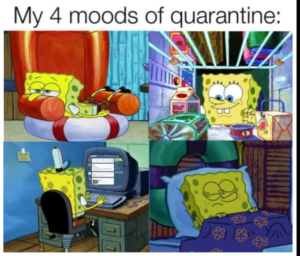
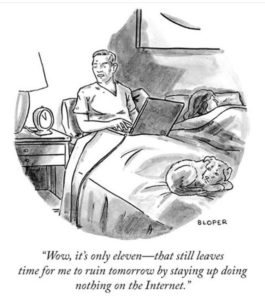
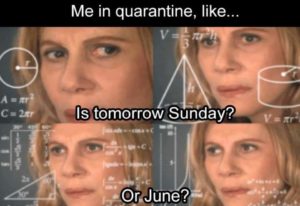
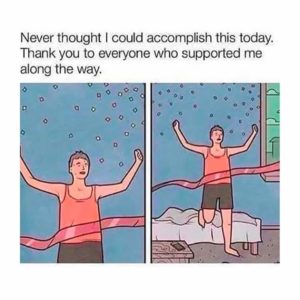
Memes exemplifying the general mood of timelessness and screen use that imply declining sleep hygiene.
There has also been less reflection on “summer”, despite this word appearing in many nostalgic texts both before and during 2020, (e.g., posts to the effect of ‘this takes me back to the summer of 2015’). It would be fair to assume that listeners’ memories of simpler and more innocent times might be more common now, but this is not reflected in the commentary. A simple explanation is that attention is so focused on COVID-19 and its associated terms that the pandemic takes precedence in commenters’ thoughts: for instance, a user might write “I’m still awake listening in lockdown” rather than “I’m still awake listening late at night”. Interestingly, the word “during” appears much more frequently since March 2020, and it works in context with many of the terms that have appeared in this section: ‘listening during quarantine’, ‘on in the background during my classes on zoom’, ‘this kept me going during hours of homework’. Such comments appear to serve a purpose of recording current feelings and/or diarising, with sentiments frequently shared by the wider community. These range from the trivial – essentially, ‘who else is using these “beats to study to” to study to?’ – to the strikingly specific, where one finds microfiction like:
‘these comments are giving me loads of comfort during a really shit time. You are all lighting up this dark place I feel like I’m in. I’m supposed to be studying for my math exam but I couldn’t stop crying. Now it’s 2am and all I can hear is this calming music, and it’s putting me in a much better mood’.
Jotting down thoughts like this can be considered a form of digital lifelogging19Stefan Selke, ed., Lifelogging: Digital Self-Tracking and Lifelogging – between Disruptive Technology and Cultural Transformation (Wiesbaden: Springer Fachmedien, 2016), https://doi.org/10.1007/978-3-658-13137-1_3., a particularly significant practice during the exceptional circumstances introduced by COVID-19. Comments that position individual expressions in time and place act as a kind of chronicling, accruing to a record of cultural responses to the pandemic. Individuals in the lofi audience seem eager to acknowledge their environments and publicly attest to their living through this notable period, often in the form of questions (‘who else is listening in quarantine?’). Perhaps this kind of expression acts as self-affirmation or aims to stave off loneliness. More on this in the subsequent post!
Summary
This blog post analysed a sample of around 182k comments on lofi hip hop YouTube mixes to determine changes in commentary during the first 9 months of the COVID-19 pandemic. Between March and December 2020, commenters more often described the current contexts of their lofi listening (compared to before the pandemic), emphasising quarantine/lockdown circumstances and the use of lofi mixes while attending online school and doing homework . References to other specific times, such as “night” and “summer”, reduced in this period as the social effects of COVID-19 took centre stage. The second half of this post presents other themes, analysing lofi as a genre and community – as revealed by differences in commentary prior to and during the pandemic – in addition to considering the changing role of emotional expression among the lofi audience.
Take me to part two now!
References
| ↑1 | Simon Kemp, ‘Report: Most Important Data on Digital Audiences during Coronavirus’, Growth Quarters | The Next Web, 24 April 2020, https://thenextweb.com/growth-quarters/2020/04/24/report-most-important-data-on-digital-audiences-during-coronavirus/; Ella Koeze and Nathaniel Popper, ‘The Virus Changed the Way We Internet’, The New York Times, 7 April 2020, sec. Technology, https://www.nytimes.com/interactive/2020/04/07/technology/coronavirus-internet-use.html; Minh Hao Nguyen et al., ‘Changes in Digital Communication During the COVID-19 Global Pandemic: Implications for Digital Inequality and Future Research’, Social Media + Society 6, no. 3 (9 September 2020), https://doi.org/10.1177/2056305120948255. |
|---|---|
| ↑2 | Keir Keightley, ‘“Turn It down!” She Shrieked: Gender, Domestic Space, and High Fidelity, 1948-59’, Popular Music 15, no. 2 (1996): 149–77. |
| ↑3 | Adam Harper, ‘Lo-Fi Aesthetics in Popular Music Discourse’ (DPhil Thesis in Musicology, Oxford, University of Oxford, 2014), 371. |
| ↑4 | Emma Winston and Laurence Saywood, ‘Beats to Relax/Study To: Contradiction and Paradox in Lofi Hip Hop’, IASPM Journal 9, no. 2 (24 December 2019): 40–54. |
| ↑5 | 482.1 million views as of 17 December 2020, with some rounding. The videos individually range from 3.2 to 51.1 million views, with extreme disparities in the ratios of views to comments. There are approximately 367k combined comments. |
| ↑6 | Gerry F. Killeen and Samson S. Kiware, ‘Why Lockdown? Why National Unity? Why Global Solidarity? Simplified Arithmetic Tools for Decision-Makers, Health Professionals, Journalists and the General Public to Explore Containment Options for the 2019 Novel Coronavirus’, Infectious Disease Modelling 5 (1 January 2020): 442–58, https://doi.org/10.1016/j.idm.2020.06.006. |
| ↑7 | Adam Harper, ‘What Is Lo-Fi? A Genealogy of a Recurrent Term in the Aesthetics of Popular Music Production’ (Research Seminar, City University London, 9 December 2020); Michael Wu, ‘What Are Lofi Hip Hop Streams, and Why Are They So Popular?’, Study Breaks, 2 December 2018, https://studybreaks.com/culture/music/lofi-hip-hop-streams-popular/; Winston and Saywood, ‘Beats to Relax/Study To’, 49. |
| ↑8 | Olasile Babatunde Adedoyin and Emrah Soykan, ‘Covid-19 Pandemic and Online Learning: The Challenges and Opportunities’, Interactive Learning Environments (2 September 2020): 1–13, https://doi.org/10.1080/10494820.2020.1813180. |
| ↑9 | Kemi Alemoru, ‘Inside YouTube’s Calming “Lofi Hip Hop Radio to Relax/Study to” Community’, Dazed, 14 June 2018, https://www.dazeddigital.com/music/article/40366/1/youtube-lo-fi-hip-hop-study-relax-24-7-livestream-scene. |
| ↑10 | Winston and Saywood, ‘Beats to Relax/Study To’, 50. |
| ↑11 | All example texts are paraphrased, or cut up and rearranged, to preserve poster anonymity. I rarely introduce entirely new words so that a faithful portrait of the sentiments expressed in lofi commentary is maintained. |
| ↑12 | When I read this back, it seemed erroneous, so I checked the stats. “Covid-19” previously appeared in 0% of texts (0 mentions) and appears in 0.0686% of texts after 1 March (58 mentions). “Stay” jumped from 0.9457% (921) to 1.3821% (1168), which is a more statistically significant jump according to the Bejamini-Hochberg procedure. |
| ↑13 | All terms quoted as significant in this article use p≤0.001. |
| ↑14 | Erin Richards, ‘Students Are Falling behind in Online School. Where’s the COVID-19 “disaster Plan” to Catch Them Up?’, USA Today, 14 December 2020, https://eu.usatoday.com/in-depth/news/education/2020/12/13/covid-online-school-tutoring-plan/6334907002/; The Center for Research on Education Outcomes, ‘Estimates of Learning Loss in the 2019-2020 School Year’ (Stanford University, October 2020), https://credo.stanford.edu/publications/estimates-learning-loss-2019-2020-school-year. |
| ↑15 | Li Li and Scott Titsworth, ‘Student Misbehaviors in Online Classrooms: Scale Development and Validation’, American Journal of Distance Education 29, no. 1 (2 January 2015): 41–55, https://doi.org/10.1080/08923647.2015.994360; Aakash Taneja, Vincent Fiore, and Briana Fischer, ‘Cyber-Slacking in the Classroom: Potential for Digital Distraction in the New Age’, Computers & Education 82 (1 March 2015): 141–51, https://doi.org/10.1016/j.compedu.2014.11.009. |
| ↑16 | Jonathan Crary, 24/7: Late Capitalism and the Ends of Sleep (London: Verso Books, 2014). |
| ↑17 | Winston and Saywood, ‘Beats to Relax/Study To’, 49. |
| ↑18 | Zoom removed this feature in April, although competitors like GoToWebinar retain it. |
| ↑19 | Stefan Selke, ed., Lifelogging: Digital Self-Tracking and Lifelogging – between Disruptive Technology and Cultural Transformation (Wiesbaden: Springer Fachmedien, 2016), https://doi.org/10.1007/978-3-658-13137-1_3. |
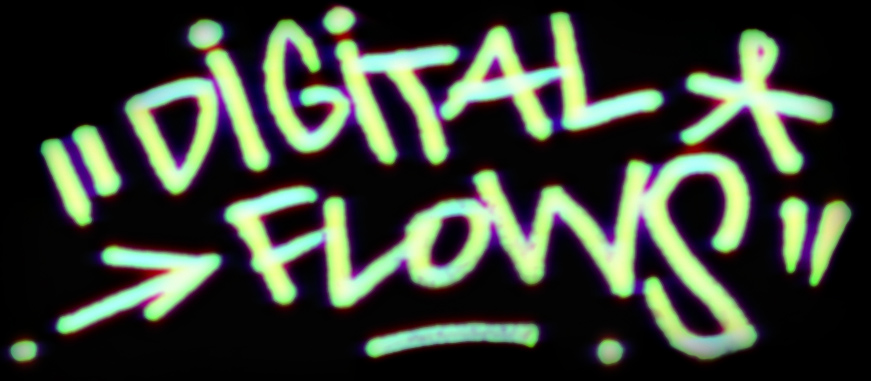
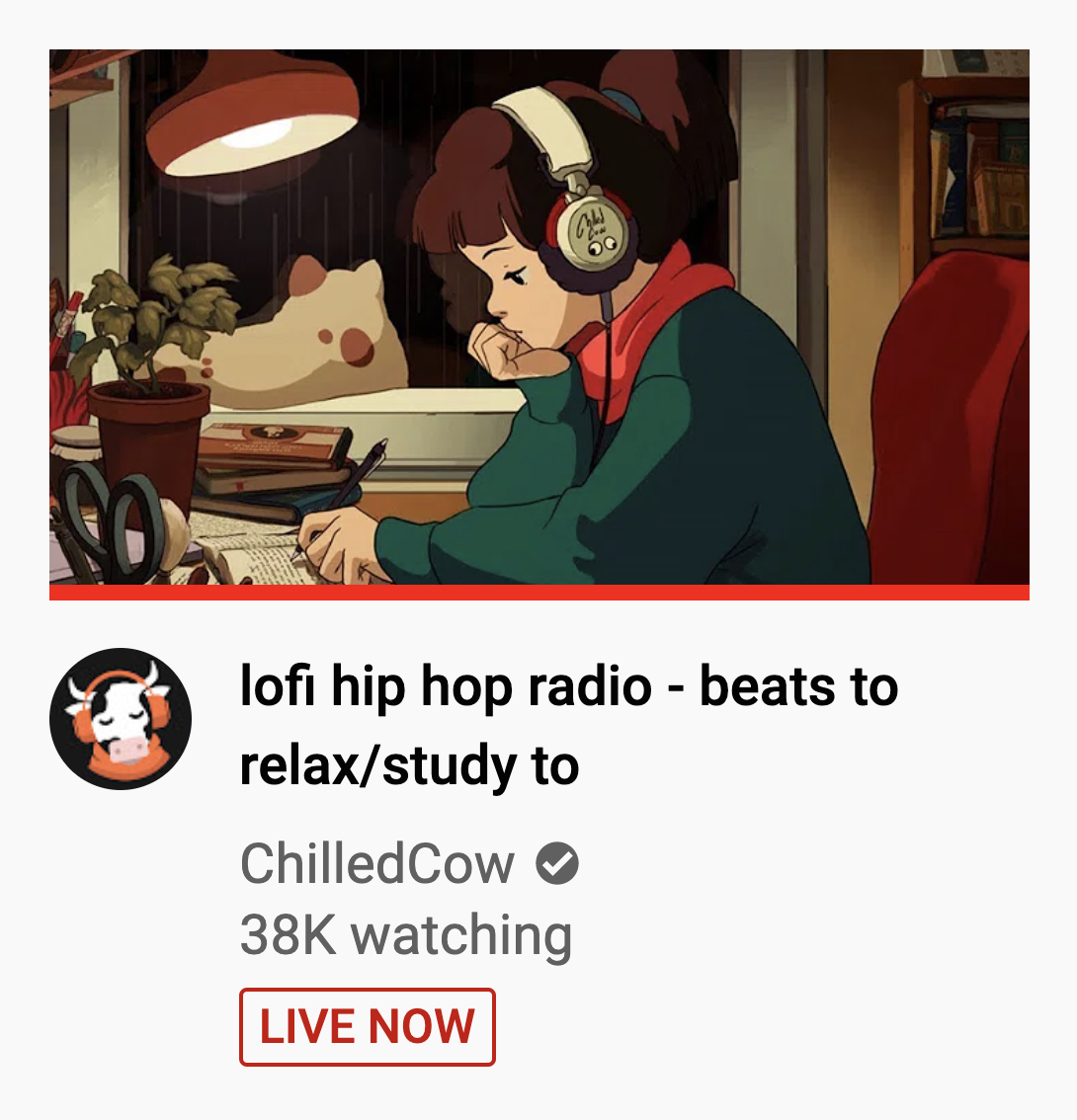
Comments are closed.